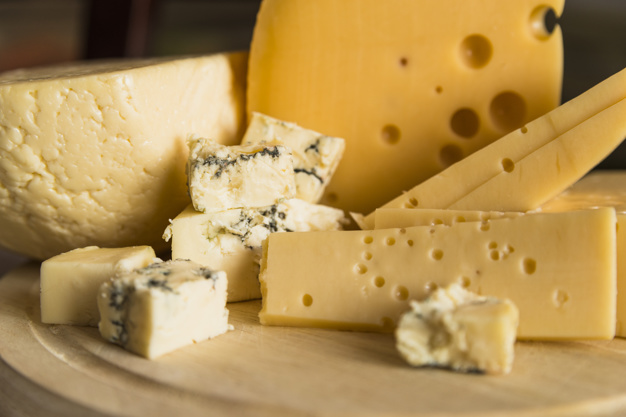top of mind news
- Reopenings Provide Some COVID-19 Hope, Especially for Casual Dining
- Restaurant Sales Are Coming Back, But The Return Is Quicker Some Places Than Others
- Fed Listens: How is COVID-19 Affecting Your Community?
- Tools for Restaurants Developing Employee Health Screenings
- Working Lunch: Independent Restaurant Coalition Gives A Voice To Smaller Businesses
Poultry
 For the week ending May 16th, chicken production fell .7% from the prior week and was 3.5% less than the same week last year. The six-week total for chicken output is lower from 2019 by 1.5% due to a 3% decline in slaughter and 1.5% heavier bird weights. The six-week sum of chick placements is tracking 7.8% below the previous year. Assuming 3% heavier bird weights, chicken output could track near 5% below 2019 in the coming weeks which could be especially supportive of the chicken markets, especially until hamburger costs return to more normal levels. April 30th chicken stocks were 6% larger than last year with breast (33%), leg quarter (25%) and thigh meat (5%) holdings all bigger. The chicken wing inventory was down 13%.
For the week ending May 16th, chicken production fell .7% from the prior week and was 3.5% less than the same week last year. The six-week total for chicken output is lower from 2019 by 1.5% due to a 3% decline in slaughter and 1.5% heavier bird weights. The six-week sum of chick placements is tracking 7.8% below the previous year. Assuming 3% heavier bird weights, chicken output could track near 5% below 2019 in the coming weeks which could be especially supportive of the chicken markets, especially until hamburger costs return to more normal levels. April 30th chicken stocks were 6% larger than last year with breast (33%), leg quarter (25%) and thigh meat (5%) holdings all bigger. The chicken wing inventory was down 13%.
Beef
Beef production last week rose 11.4% from the prior week but was 11.5% less than the same week a year ago. Cattle slaughter at 555k head was a seven-week high. After this week’s holiday interrupted week, output is expected to continue to expand into the summer. However, recent USDA data signals that the cattle supply could tighten considerably as early as the late summer. The May 1st U.S. cattle on feed inventory was 5% less than the prior year with April placements into feedlots lower by 22%. Beef prices were generally lower during the last week, especially beef 50’s. This bearishness is likely to continue.
Pork
Pork output last week rose just 2.1% from the week prior and was 5.9% less than the same week last year. Pork production is expected to improve versus 2019 in the coming weeks due in part to better production efficiencies and heavier hog weights. This could keep downward pressure on the pork markets. April 30th pork stocks were down 1% from last year with hams (6 percent), loins (3 percent) and ribs (21 percent) all lower. Butts (25 percent), picnics (34 percent), trim (20 percent), and bellies (21 percent) were all larger than the previous year.
THE SEA
Seafood
Slack food service demand continues to temper most of the seafood markets including salmon. U.S. salmon imports during March were down 10.2% from the previous year with filet imports down by 6.5%. Imports are expected to improve however in the coming months at the same time that food service improves. This could mitigate any upside price potential in the salmon markets this summer.
THE GARDEN
Produce
The tomato markets have remained relatively expensive during the last week. The chief harvest areas in both the west and east are shifting northward, and better tomato supplies are anticipated in the coming weeks. Typically, the tomato markets are steady to firm in the coming weeks. But in years when tomato prices were inflated during May. However, any time the mature green large tomato market has averaged above $17 a case like this year, it has moved sharply lower during June. The avocado supply is anticipated to improve in the near term as well.
THE KITCHEN SINK
Dairy
The CME cheese block and barrel markets have increased sharply over the last five weeks. U.S. government food box relief purchasing is supporting cheese prices. But prices are now above the global cheese markets which is discouraging exports. Anticipate cheese prices to top and weaken before July. The butter markets have been supported as of late due in part to tightening cream supplies. Per the USDA, April 30th domestic butter stocks were 26.7% above 2019 and were up 19.1% from the prior month. Since 2015, the spot butter market averages 4.8% higher during June than it averages during May.
Grains
The grain markets have been on the defensive during the last several months. Building rhetoric between the U.S. and China has brought unease to U.S. grain export expectations. If the phase one trade agreement were to be interrupted in the coming months, it could weigh heavy on the grain markets, especially soybeans.
Oil
After hitting the lowest level in 18 years last month, nearby diesel fuel futures have firmed (since then). As economic activity increases in the U.S; expect the diesel fuel markets to find further price support. But, remain below year ago levels.













